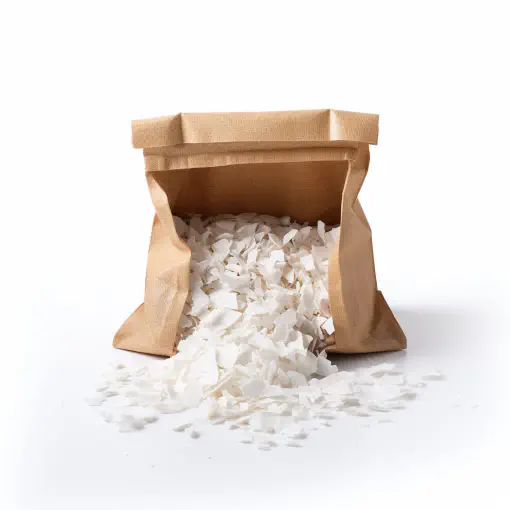Polyethylene wax (PE wax) is a synthetic wax made from polyethylene, a polymer composed of repeating ethylene monomer units. Here are some physical features of polyethylene wax:
Applications
-
Appearance:
Polyethylene wax is typically available as a solid in various forms, including granules, flakes, or powders. It is usually white or pale yellow in color.
-
Melting Point:
The melting point of polyethylene wax can vary depending on its molecular weight and degree of crystallinity. Generally, it has a relatively low melting point, typically ranging from 80 to 140 degrees Celsius.
-
Density:
Polyethylene wax has a low density, typically ranging from 0.92 to 0.96 grams per cubic centimeter (g/cm³). This low density contributes to its easy processability and lightness.
-
Hardness:
Polyethylene wax exhibits a range of hardness levels depending on its molecular weight and crystallinity. It can vary from soft and pliable to hard and brittle forms.
-
Viscosity:
Polyethylene wax has a low viscosity, which means it flows relatively easily when heated. This property is advantageous for its use as a lubricant or processing aid.
-
Odor:
Polyethylene wax is typically odorless or may have a slight, waxy odor. It does not emit strong or unpleasant odors during use.
-
Solubility:
Polyethylene wax is insoluble in water but can be soluble in some organic solvents, such as chlorinated hydrocarbons or aromatic hydrocarbons, when molecular weight and temperature are considered. Generally, polyethylene wax is considered to have limited solubility.
-
Thermal Stability:
Polyethylene wax exhibits good thermal stability under normal processing conditions. It has a high heat resistance and can endure relatively high temperatures without significant degradation.
-
Low Surface Energy:
Polyethylene wax has a low surface energy, which provides it with excellent release and anti-blocking properties. This makes it suitable for various applications where slip and smoothness are desired.
-
Compatibility:
Polyethylene wax is compatible with a wide range of polymers, additives, and other waxes. It can be blended with other materials to modify properties or enhance performance.
These features make polyethylene wax a versatile material with many industrial applications, including as a lubricant, release agent, processing aid, or additive in various industries such as plastics, rubber, coatings, and textiles.
